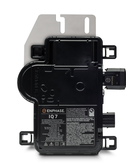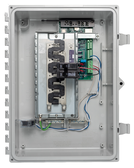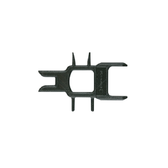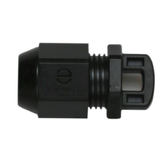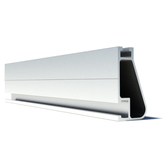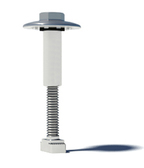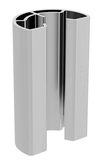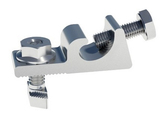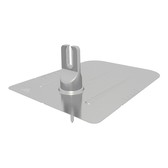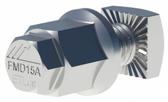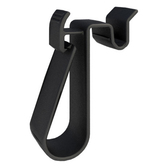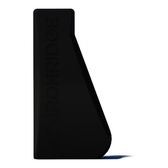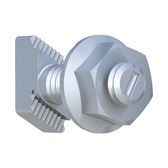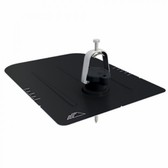 Loading... Please wait...
Loading... Please wait...- Home
- Solaris Blog
- Hanwha Q Cells Solar Panels: Complete Review
Products
- Heating and Cooling
- Outdoor Living & Patio
- Solar Kits
- Solar Products
- Solar Panels
- Solar Panel Kits
- Solar Generators
- Inverters
- Inverter Monitoring
- Inverter Accessories
- Balance of Systems
- Racking and Mounting
- Rails
- Flashings
- Splice Kits
- Stopper Sleeves
- Conduit Mounts
- Attachments
- Brace Assembly
- Base Mount
- Brackets
- Bolts
- Clamps
- Caps
- L-Feet
- Washers
- Skirt
- Lugs
- Tilt Legs
- Hooks
- Stand-Offs
- Ballast Bay
- Top of Pole Mount
- Side of Pole Mount
- Flush Mount Kits
- Ground Mount Kits
- Roof Mount Kits
- Hardware Packages
- Wire Management
- Batteries
- Battery Accessories
- Charge Controllers
- Tools and Supplies
- View All Products
Hanwha Q Cells Solar Panels: Complete Review
Posted by Brandi Casey on 25th Aug 2019

Hanwha Q Cells is a leading innovator of solar energy technology from cell to solar panel. A trusted name in the solar industry, Q Cells modules are known for their high temperature tolerance, efficiency and low cost. From commercial to residential, Q Cell solar panels provide users with high efficiency modules that enhance system performance while staying within budget.
The technology in their Q.PEAK series earned them the Intersolar Award in innovation for two consecutive years (2017 and 2018). While their Q. ANTUM cell technology has recently set the standard in power energy yield. Between their half-cells, six busbar design and specialized interconnection utilizing round wires efficiency of the modules dramatically increases, even in high temperature conditions.
Hanwha Q Cell’s has locations all over the world including, South Korea, China, Malaysia, Germany and the United States - this allows them to meet market demand while expanding their technical knowledge in various climates.
With attractive designs from white on black to all black, Hanwha Q Cells panels are not only functional, but aesthetically pleasing as well. Customer’s of Hanwha Q Cells not only benefit from their technology and aesthetics, but from their low-mid range price point as well.
In this complete review of Hanwha Q Cells solar panels, we will be looking at the following?
- Specifications and Pricing
- Average Cost per Watt Comparison
- Module and Cell Technology
- Warranty Period
- Hanwha Q Cells Potential ROI
- And Solaris Recommendations
See Here: Hanwha Q Cells Solar Panels for Sale
Specifications and Pricing
Hanwha Q Cells offers a wide range of series and are consistently producing new panels with updated technology year by year. The Q.PEAK series is among the most popular and market ready, the modules come with a black on black design and offer high efficiency ratings backed by Q Cells 25 year performance warranty.
Which module best suits your needs will vary depending on the site conditions for your project, and your total energy yield. The traditional rule of thumb is to use higher-watt modules with smaller roofs to both fit the roof space and meet your energy needs. The same can be true of installs that have ample space, you can save a great deal in start up costs by using higher watt modules to drive down the cost of goods needed for our project.
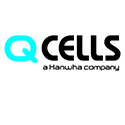
|
Q.PEAK BLK G4.1 295
|
Q.PEAK DUO-BLK G.5 310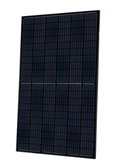
|
| Watts: | 295 | 310 |
| Series: | Q.PEAK BLK | Q.PEAK DUO BLK |
| Pricing: | See Price Here | See Price Here |
| Efficiency: | 17.70% | 18.10% |
| Dimensions: | 65.70 x 39.40 x 1.26 Inches | 66.34 x 39.37 x 1.26 Inches |
| Weight: | 41.45 lbs | 41.23 lbs |
| Cells: | 60 Q.ANTUM Mono | 120 Half-Cut Q.ANTUM Mono |
| Isc: | 9.63 Amps | 9.78 Amps |
| Voc: | 39.19 Volts | 39.75 Volts |
| Imp: | 9.07 Amps | 9.31 Amps |
| Vmp: | 31.96 Volts | 32.78 Volts |
| Docs: |
Specs Warranty |
Specs Warranty |
Average
Cost p
er Watt
Hanwha Q Cells modules average out to be $0.67/watt to start on average. This figure comes $0.09/watt higher than Longi Solar's average, but $0.01/watt under Canadian Solar. This puts Hanwha Q Cells at a lower mid-range price point, and comes in at $0.36/watt lower than high cost panels such as LG Solar and Panasonic.
An added benefit to using Hanwha Q Cells modules, is that you are backed by a strong company with over twenty years experience in the solar industry. Their lower price point and high efficiency are and important part of what makes their panels so desirable, their total efficiency rate comes in around 18% on average, this figure matches the lower cost Longi Solar modules average - however greater efficiency ratings are available from Hanwha Q Cells when same watt modules were compared.
Like other mid-rage modules, the efficiency rating comes in between 2-4% lower than high-cost and efficiency modules such as those form LG and Panasonic. However, when cost is compared, there is potential significant savings by using the mid-range panels. Owners will likely not notice much day to day difference in the total output of the system. However when degradation begins down the average 25 year life span of the panel you will have greater efficiency with LG and Panasonic.
Module and Cell Technology
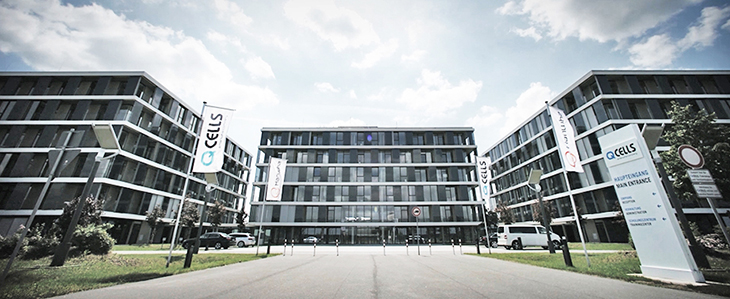
Hanwha Q Cells Headquarters
Hanwha Q Cells's Q.ANTUM cell technology delivers exceptional performance under real-world conditions. The Q.ANTUM has been tested and proven to generate more power under low light conditions (sunset, cloudy days, etc.). In addition, the modules offer greater energy yields during hot and sunny days, making the output of the modules consistent across a range of temperatures.
In addition, the Q.ANTUM based on Passivated Emitter Rear Cell (PERC) technology which allows for the passivatasion of the solar cell's rear side. This reflectie layer is designed to capture previously unused sunlight and direct it back into the cell where it can be converterd into usable energy. Q Cell's special nano coating is what functions as a mirror for these rays of sunlight to enhance efficiency of the panel considerably.
Warranty
Hanwha Q Cells solar panels come with a 12 year product and 25 year linear performance warranty. The 12 year product warranty ensures that under nomral operating conditions the panel will be free from defects in materials or workmanship that have a negative effect on the output power of the modules. This product warrany is 2 year longer than the average product warranty in the industry today, which is 10 years. This comes in under LG and Panasonic's industry leading 25 year prodcut warranty.
The 25 year linear performance warranty is industry standard, and warrants 97% of the minimum power output noted on the module data sheet during the first year. It also guarantees a yearly maximum degradation rate of no more than 0.6% from the start of the second year. By the 25th year of the warranty start date Q Cells modules guarantee a minimum power output of 83% of the minimum power specified on the modules data sheet.
See Here: Hanwha Q Cells Warranty
Calculating Potential ROI

Hanwha Q Cells Shingle Roof System
To get an idea of potential ROI savings utilizing Hanwha Q Cells modules, we put together a 7.44kW roof mount solar array utilizing Enphase Energy IQ microinverters.
The system includes 24x Hanwha Q Cells 310 Q.PEAK DUO G.5 solar panels, IQ7 microinverters with monitoring and accessories, as well as a complete IronRidge racking kit. The system was designed in portrait orientation 2 panels high and 12 across (2x12). We selected the standard XR100 series which is the usual racking series that are used in residential roof mount applications.
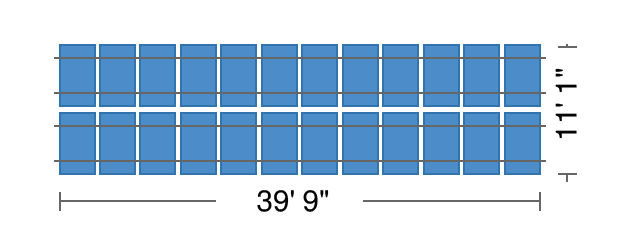
The bill of materials are as follows:
*Prices reflective of current pricing as of the posting of this article. Click on the item image to check current pricing. Does not include potential taxes and fees which may apply. Prospective system owners will also need a permit plan.
The above system costs an average of $10,380.84 before taxes and possible state specific fees. This comes out to about $1.39 per watt, about $0.04/watt lower than Canadian Solar's average under a similar test. To calculate the overall energy savings, we accounted for 100% offset for a California home.
The system should be producing 13,392 kWh annually or 1,116kWh on a monthly basis. By taking the average cost of per kilowatt hour in the United States ($0.12/kWh) and multiplying it by the estimated monthly usage, we can determine how much money the system will save per month.
Assuming the system produces 1,116kWh/month, users can expect $133.92 in energy savings monthly. In order for the system to pay for itself (excluding rebates and incentives, and possible costs of installation) will take approximately 77.5 months, or 6.45 years.
Learn Here: How to size your solar energy system
Solaris Recommendations
Hanwha Q Cells is a great option for solar energy project on a budget with efficiency in mind. Although the modules are outpaced by some of them competitors, the cost savings makes the efficiency rating differences largely negligible, particularly when panels are compared side by side.
For those who live in low light conditions, the Q.ANTUM provides an excellent solution for low iridescence, which means that you will ultimately get more out of your solar energy system. The product warranty is above the industry standard of 10 years, which gives users added flexibility in their system.
In addition, their expected output of 83% after twenty five years beats Canadian Solar's 80.7% expected output. All modules at the mid range price point comes with a number of strengths and weaknesses when compared to their competition, ultimately which panel you pick will have a lot to do with your budget and site conditions.
See Here: Canadian Solar Panels: Complete Review


